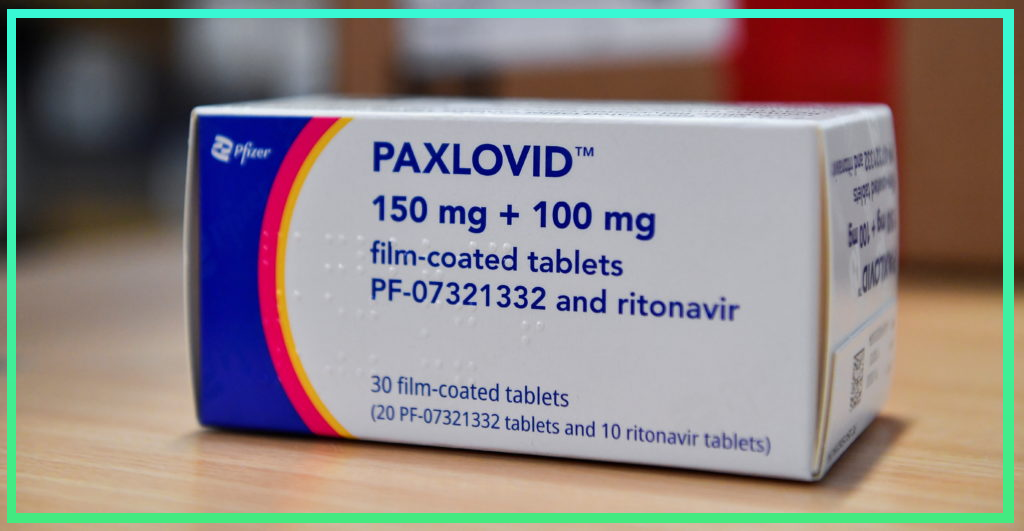As the COVID-19 pandemic persists, the search for effective treatments remains paramount. Among the emerging antiviral medications, Paxlovid has garnered attention for its potential in managing mild-to-moderate cases of COVID-19. This article delves into the mechanism of action, efficacy, dosage, potential drug interactions, and other essential aspects of Paxlovid.
What is Paxlovid?
Paxlovid, developed by Pfizer, is an oral antiviral medication designed to treat mild-to-moderate cases of COVID-19 in adults and pediatric patients aged 12 years and older who meet certain weight criteria. It comprises two key components: nirmatrelvir, a protease inhibitor, and ritonavir, a pharmacokinetic enhancer.
Mechanism of Action
Paxlovid operates by inhibiting the activity of the SARS-CoV-2 virus, which causes COVID-19. Nirmatrelvir targets the virus’s main protease, hindering its ability to replicate and spread within the body. Ritonavir complements this action by enhancing the concentration of nirmatrelvir in the bloodstream.
Efficacy and Clinical Trials
Clinical trials, such as the EPIC-HR study, have shown promising results regarding Paxlovid’s efficacy in treating COVID-19. In high-risk patients with mild-to-moderate COVID-19, Paxlovid significantly reduced the risk of hospitalization or death compared to a placebo. The trial reported an 89% reduction in this risk among patients who received Paxlovid.
Administration and Dosage
Paxlovid is administered orally in tablet form. The recommended dosage regimen involves a specific intake schedule over several days. On the first day, patients are advised to take three tablets of nirmatrelvir (300 mg) along with one tablet of ritonavir (100 mg). Subsequently, for days two to five, the dosage shifts to two tablets of nirmatrelvir and one tablet of ritonavir, all taken together as a single daily dose.
Potential Drug Interactions and Risks
Like any medication, Paxlovid may interact with other drugs, potentially altering their efficacy or increasing the risk of adverse effects. Healthcare providers need to assess patients’ medication profiles thoroughly to identify potential drug interactions before prescribing Paxlovid. Ritonavir, being a potent enzyme inhibitor, can affect the metabolism of various drugs, necessitating caution when prescribing Paxlovid alongside other medications.
Advancements in COVID-19 Treatment
Paxlovid represents a significant advancement in the treatment of COVID-19, offering a promising therapeutic option for individuals with mild-to-moderate disease. Its mechanism of action, demonstrated efficacy in clinical trials, and oral administration make it a valuable addition to the arsenal against COVID-19.
Vigilance and Monitoring
Healthcare providers must remain vigilant regarding potential drug interactions and closely monitor patients receiving Paxlovid for any adverse effects. Continuous research endeavors aim to enhance our understanding of Paxlovid’s safety and efficacy profile, contributing to the global effort to combat the COVID-19 pandemic.
Conclusion
In conclusion, Paxlovid emerges as a beacon of hope in the ongoing battle against COVID-19. With its proven efficacy, manageable administration, and potential to mitigate the severity of the disease, Paxlovid stands as a significant milestone in the quest for effective treatments. However, caution must be exercised regarding potential drug interactions, highlighting the importance of thorough assessment and monitoring by healthcare professionals.
FAQ
1. What is Paxlovid?
Paxlovid is an oral antiviral medication developed by Pfizer to treat mild-to-moderate cases of COVID-19 in eligible patients.
2. How does Paxlovid work?
Paxlovid works by inhibiting the activity of the SARS-CoV-2 virus through its components, nirmatrelvir, and ritonavir.
3. What are the recommended dosages for Paxlovid?
The recommended dosage regimen involves specific intake schedules over several days, as prescribed by healthcare professionals.
4. Are there any potential drug interactions with Paxlovid?
Yes, Paxlovid may interact with other medications, particularly those metabolized by cytochrome P450 enzymes, due to the presence of ritonavir.
5. Who can use Paxlovid?
Paxlovid is indicated for adults and pediatric patients aged 12 years and older who meet certain weight criteria and have mild-to-moderate COVID-19.
6. What clinical trials have been conducted on Paxlovid?
One notable trial is the EPIC-HR study, which demonstrated Paxlovid’s efficacy in reducing the risk of hospitalization or death in high-risk COVID-19 patients.
7. How should healthcare providers monitor patients taking Paxlovid?
Healthcare providers should carefully monitor patients for potential adverse effects and drug interactions while administering Paxlovid. Regular follow-ups and assessments are recommended to ensure patient safety and treatment efficacy.


Leave a Reply